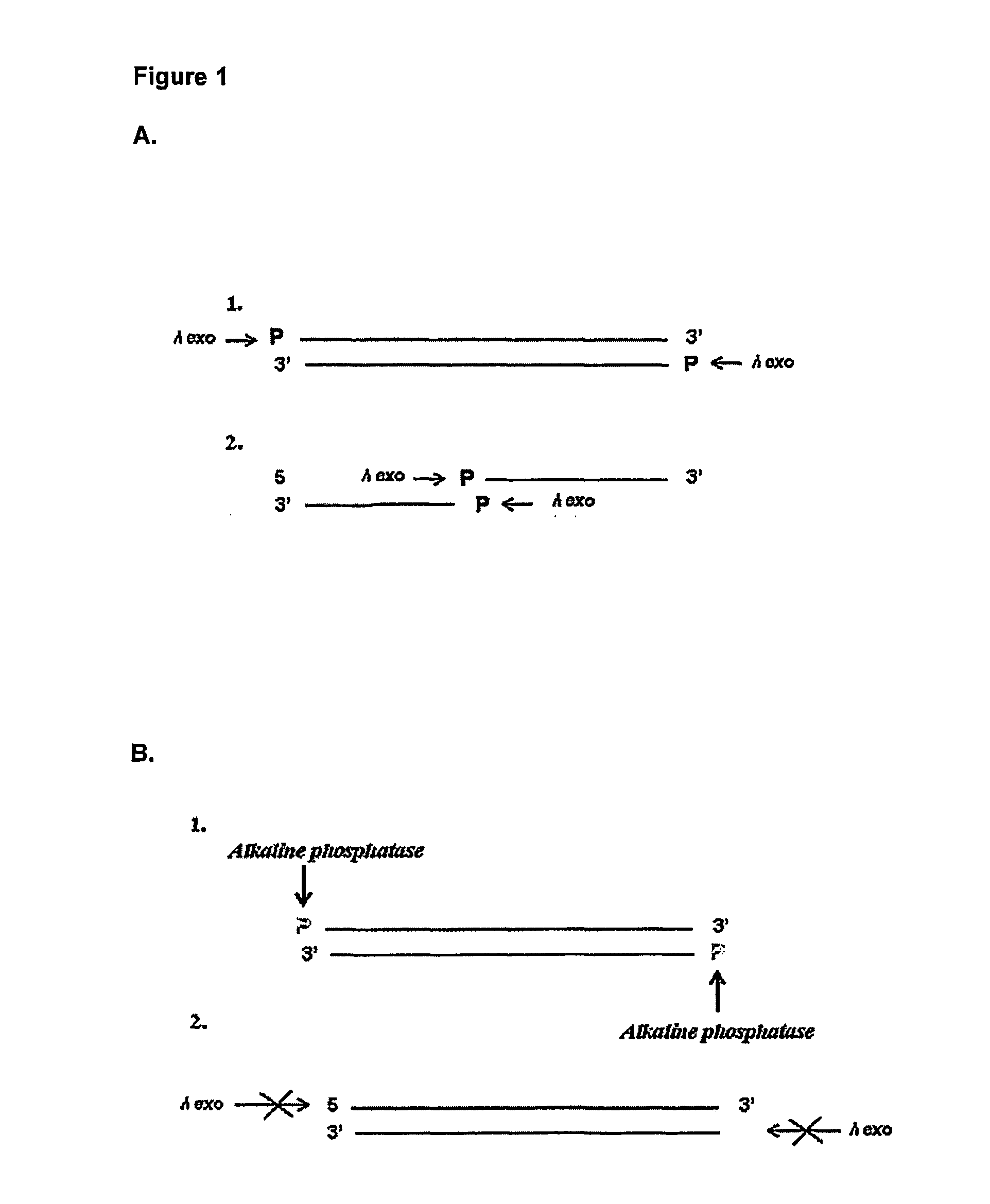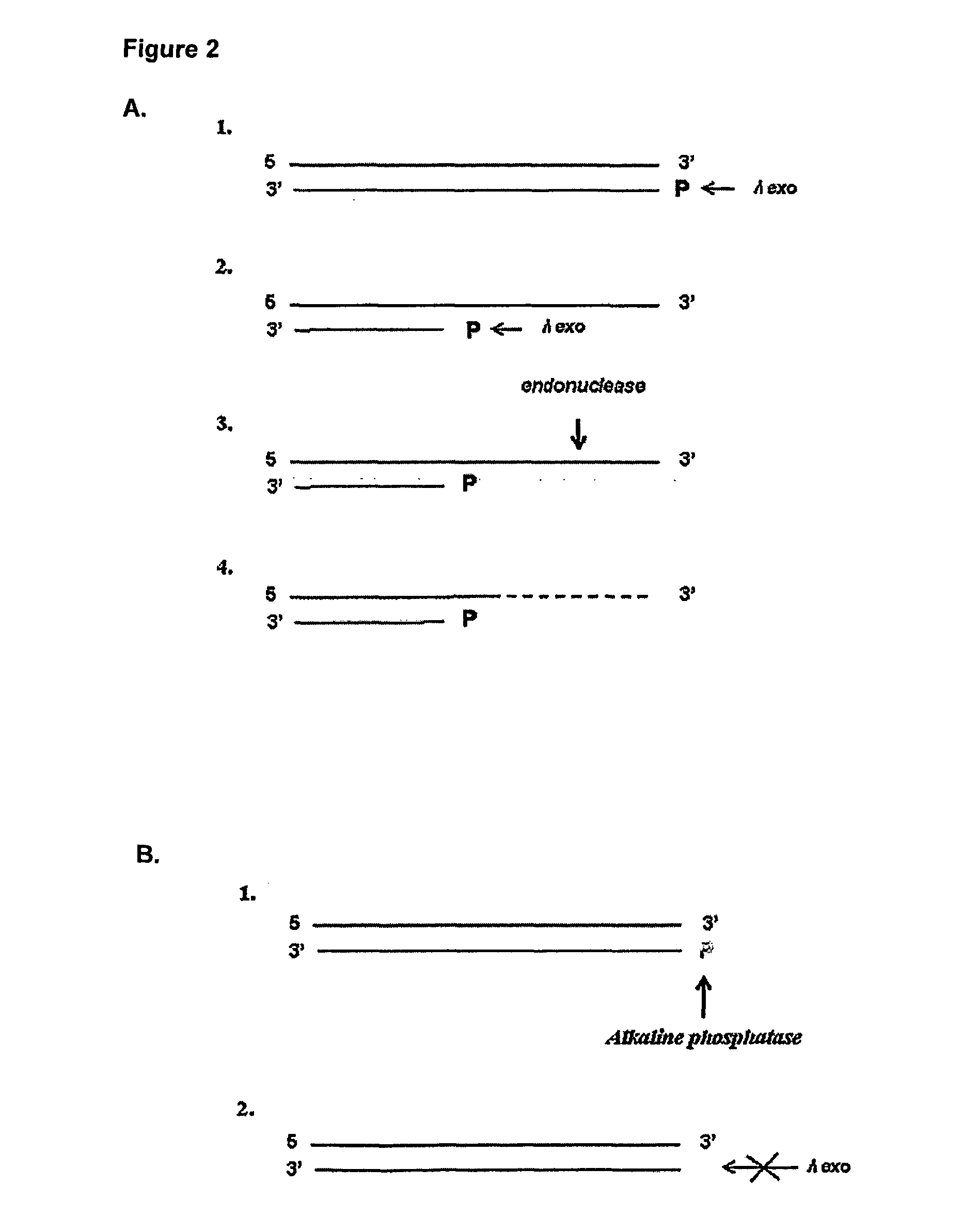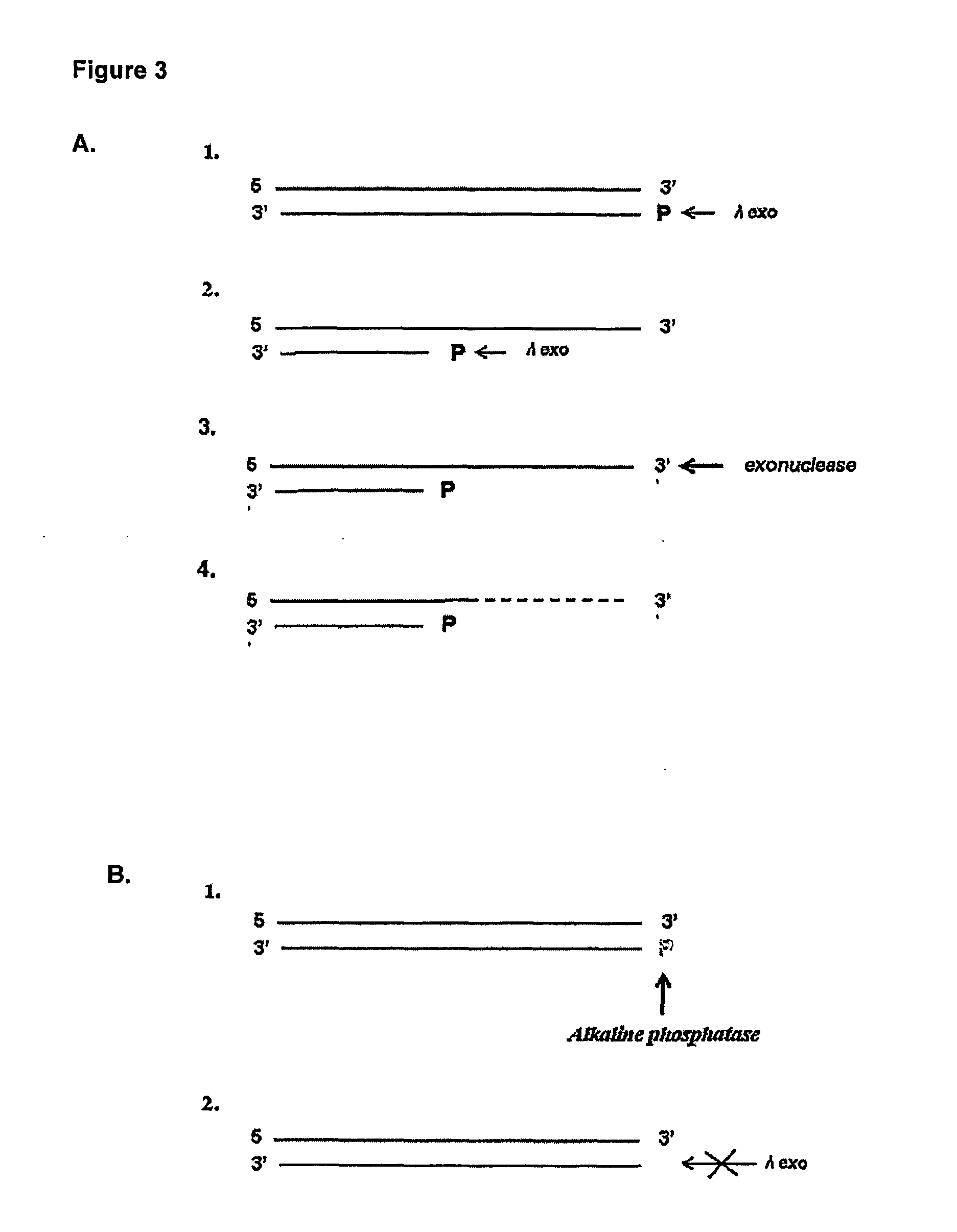Methods and kits for detecting an enzyme capable of modifying a nucleic acid
a technology of nucleic acid and kit, which is applied in the field of kits for detecting enzymes, can solve the problems of difficult diagnosis, false positive of psa test, and difficulty in detecting some pathogenic organisms, so as to broad substrate specificity, and increase the sensitivity of immunoassay
- Summary
- Abstract
- Description
- Claims
- Application Information
AI Technical Summary
Benefits of technology
Problems solved by technology
Method used
Image
Examples
Embodiment Construction
[0033] As aforementioned, the present invention seeks to provide improved methods for detecting an enzyme in a sample which is capable of modifying a nucleic acid molecule by detecting the change in the nucleic acid molecule caused by the enzyme.
[0034] Such methods may be employed in a number of settings where a sensitive method of detection of an enzyme activity is required. For example, the methods of the invention may be used to enhance the sensitivity of immunological detection of an analyte and in order to provide more sensitive diagnostic methods for diagnosing specific disease conditions.
[0035] Therefore, in a first aspect of the invention there is provided a method of detecting an enzyme in a sample wherein the enzyme is capable of adding or removing a chemical moiety to or from a nucleic acid molecule, which thereby confers altered sensitivity of the nucleic acid molecule in a subsequent process, the method comprising:
[0036] allowing the sample to be tested for the prese...
PUM
| Property | Measurement | Unit |
|---|---|---|
| volume | aaaaa | aaaaa |
| volume | aaaaa | aaaaa |
| concentration | aaaaa | aaaaa |
Abstract
Description
Claims
Application Information
 Login to View More
Login to View More - R&D
- Intellectual Property
- Life Sciences
- Materials
- Tech Scout
- Unparalleled Data Quality
- Higher Quality Content
- 60% Fewer Hallucinations
Browse by: Latest US Patents, China's latest patents, Technical Efficacy Thesaurus, Application Domain, Technology Topic, Popular Technical Reports.
© 2025 PatSnap. All rights reserved.Legal|Privacy policy|Modern Slavery Act Transparency Statement|Sitemap|About US| Contact US: help@patsnap.com



